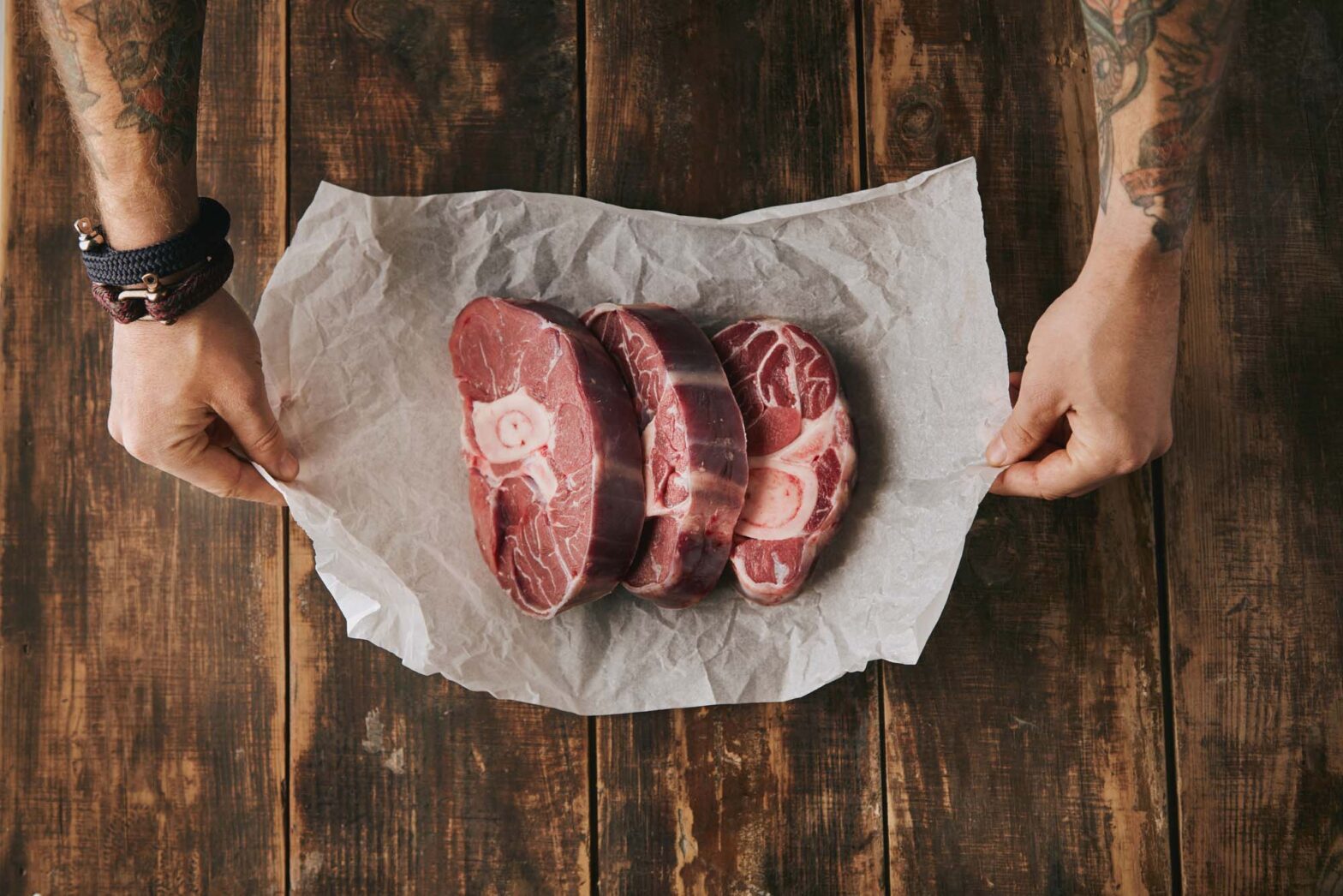Have you ever stopped to wonder if, when it comes to beef, longer cooking is always better? I know I have! Let’s see just how much of a say cooking time has in the chew factor of our favorite cuts of beef.
Different folks like their beef cooked differently. Some like it so tender that it falls apart in the mouth. Others prefer a bit of a chew to their meat. And that’s fine, because each option has its own merits, and thank goodness we live in a country where we can choose how we like our meat cooked.
But here’s the thing: Although beef does get tougher the longer it cooks, there’s more to the answer than meets the eye. And to understand why, we need to talk about the three factors that affect beef during cooking, and how they related to the different cuts of beef at the butcher shop.
It’s Mostly About Time, Heat, and Cooking Method
To figure out if longer cooking times are always the way to go with beef, we have to take a look at three factors that play a big role in how the meat turns out: time, heat, and cooking method.
Time: Time is the most obvious factor. The longer you cook the beef, the higher its internal temperature gets. The higher its internal temperature, the more done the beef is going to be. It’s just a matter of how long you want to let it cook to get it to your preferred level of doneness.
Heat: Then there’s how much heat you cook with. It’s a simple equation: The higher the heat, the quicker the meat cooks. The lower the heat, the longer the meat takes to cook. That speed is important because some cuts are best cooked quickly, and others ought to be cooked low and slow.
There are two ways to apply heat to the beef: directly and indirectly. Direct heat is when you cook it directly above or under the heat source, like grilling or broiling. Indirect heat is when you cook it near the heat source, like roasting or smoking.
Heat can also be dry and wet. Dry heat is the heat you get on the grill, the meat smoker, on the pan, or in the oven. Wet heat is when you broil or stew the meat in a pot or Dutch oven.
Cooking method: Finally, there’s the cooking method. If you’re grilling or broiling the meat, you’re going to want to select, cut, and cook it differently than if you’re braising or stewing the meat. The same applies to roasting and smoking the meat.
But It’s Also About the Cut
To understand how these factors add up, we need to talk about the two types of meat you can get from a cow: marbled and lean.
Marbled beef: Well-marbled cuts, like the cuts we use for steak, have strips of intramuscular fat that melt during cooking, adding tenderness and succulence to the meat. These cuts turn out extraordinarily juicy, and they are cooked best quickly, with high, direct heat.
Examples are strip steak, sirloin steak, flank steak, T-bone steak, ribeye steak, and the tenderloin (what the French call filet mignon).
Lean beef: Lean beef is beef that doesn’t contain much fat. Instead of fat, they’re rich in collagen—connective tissue that melts at a higher temperature than fat does. These are the cheaper cuts at the butcher shop, and they warrant low and slow cooking because the collagen has to melt.
Examples are brisket, trip-tip, sirloin tip, short ribs, back ribs, and round roast.
Putting It All Together
| Beef | Cut | Time | Heat | Method |
| Well-marbled beef For e.g.: strip steak, sirloin steak, flank steak, T-bone steak, ribeye steak, and tenderloin | Thin | Cooks quickly | With high, direct heat | Grilling, broiling, or searing in a pan |
| Lean beef For e.g.: brisket, trip-tip, sirloin tip, short ribs, back ribs, and round roast | Thick | Cooks slowly | With gentle, indirect dry heat or with wet heat | Slow-roasting, smoking, braising, or stewing. |
Well-marbled beef is best cut thin and cooked quickly, with high and direct heat, by grilling, broiling, or pan searing. The quicker and the less it’s cooked, the more tender it turns out. Prolonged cooking dries it out and worsens its mouthfeel.
Lean beef is best cut thick and cooked slowly, with either gentle and indirect dry heat or wet heat. It turns out best by slow-roasting, smoking, braising, or stewing. Low, slow, and prolonged cooking melts the collagen in the meat so that it turns it to gelatin, improving the meat’s mouthfeel.
Exactly how you like your lean beef cooked comes down to personal preferences. Some like theirs smoked or roast, with a nice crust. Others like it braised or stewed, with vegetables and herbs in a flavorful cooking liquid.
The Bottom Line
Well-marbled beef gets tougher the longer it cooks. In contrast, lean beef benefits from long cooking, as long as that cooking takes place low and slow, with gentle, indirect heat or in flavored cooking liquid.
But there is such a thing as too much cooking, even in the meat smoker or inside the pot. If you cook the beef too long, it will dry out and become tough to chew, ruining an otherwise perfectly good dinner.

